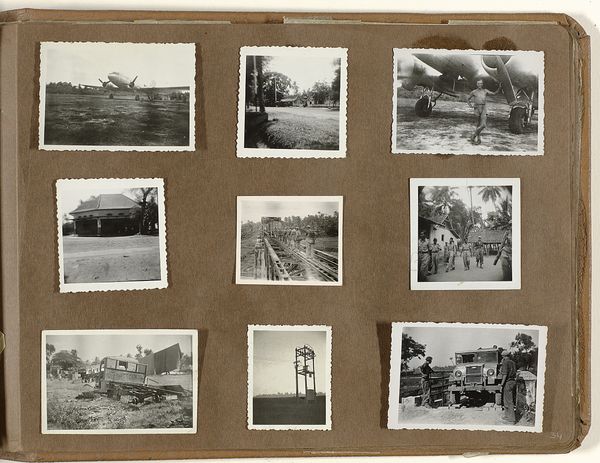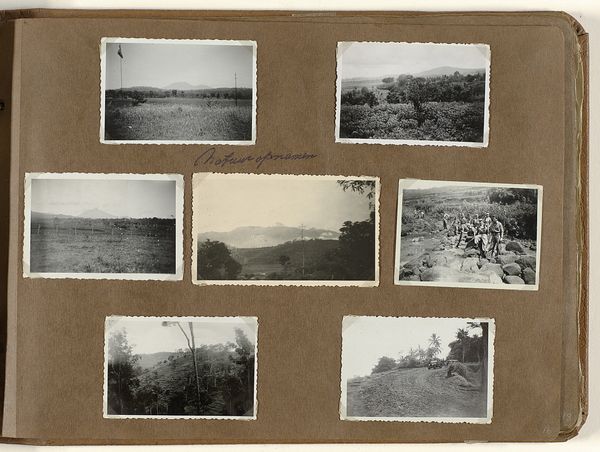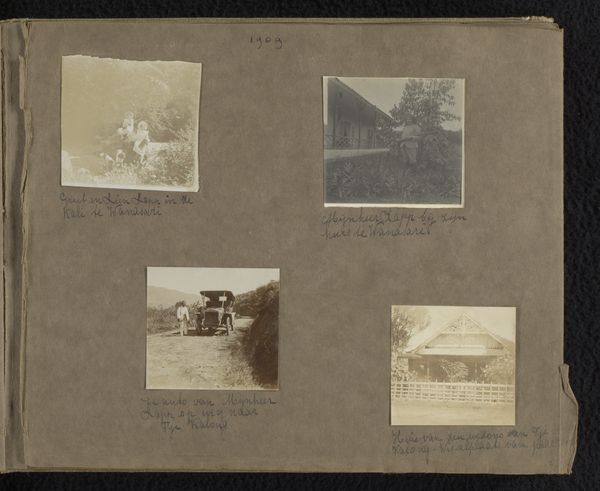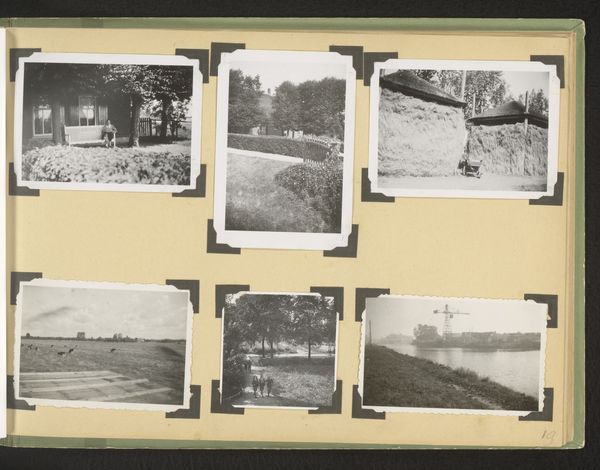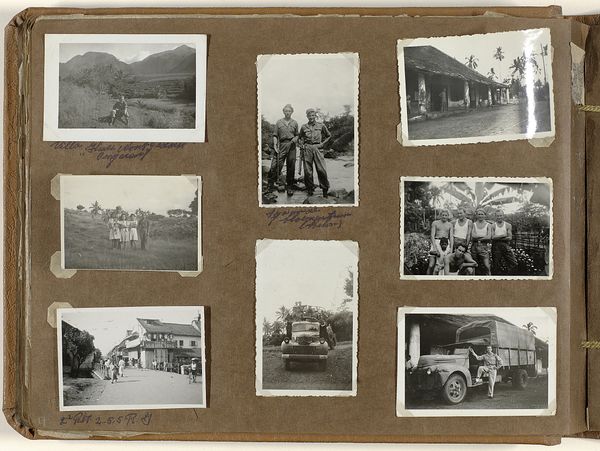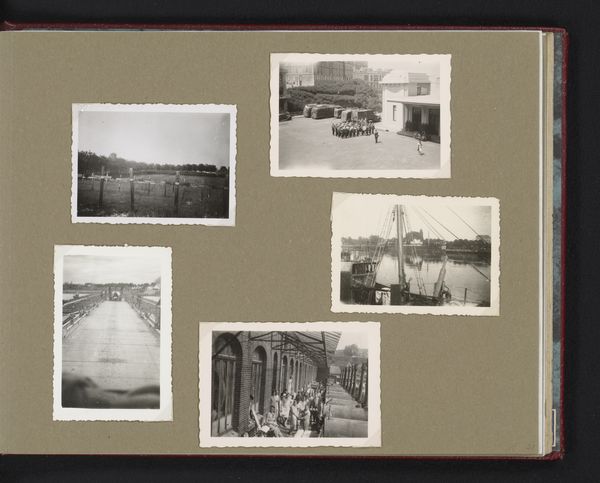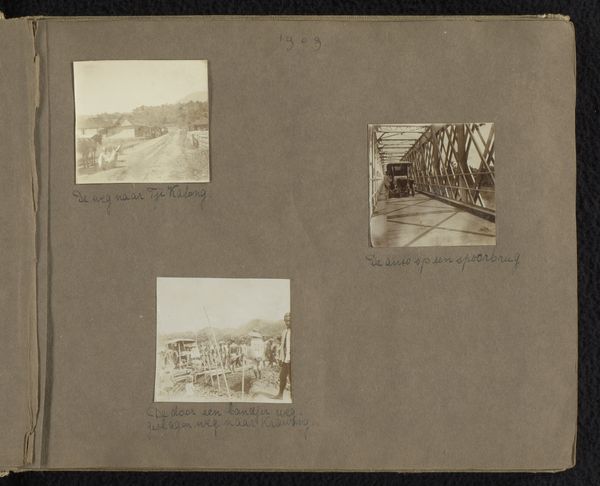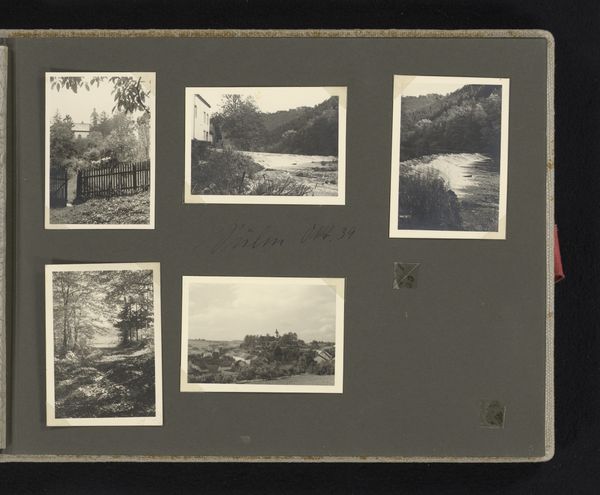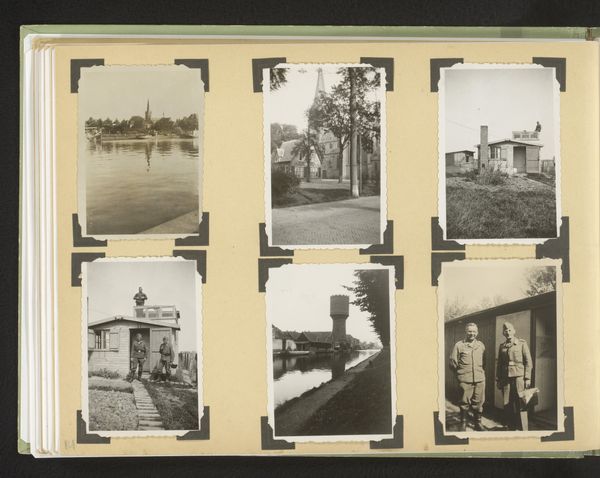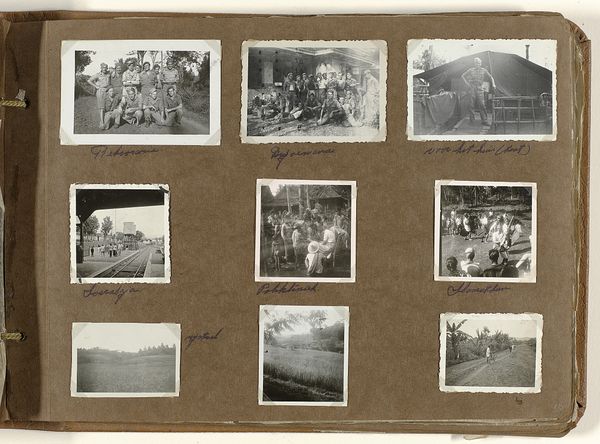
photography, albumen-print
#
landscape
#
street-photography
#
photography
#
history-painting
#
modernism
#
albumen-print
Dimensions: height 24 cm, width 34 cm
Copyright: Rijks Museum: Open Domain
Curator: This striking photographic collection is titled "Militaire colonne onderweg," dating from 1948-1949, created by an anonymous artist utilizing the albumen print process. Editor: Albumen! It lends such a particular silvery tone to the monochromatic images. I’m immediately drawn to the collage-like composition; the geometric arrangement of the photographs on the mounting page seems deliberately planned. It certainly contributes to the documentary effect, right? Curator: Indeed. Let's consider the historicity. These photographs document military transport; their placement tells its own story of this specific place and era through vernacular photography. Look at how the central images depicting transit are flanked by scenes suggesting both urban and rural landscapes—quite insightful! Editor: From a formalist viewpoint, notice how each photo utilizes light and shadow. I think about how the variations create depth and form, especially when you look at the structural framework of bridges and buildings as backdrops. There are subtle nuances—consider, for instance, the differences between the textures found between architecture and the natural scenery, for instance. Curator: Right—these details carry so much cultural weight. You see the architecture of that specific place in this historical moment. Considering this was taken just after the Second World War, this image carries a unique cultural tension—perhaps unintentionally—where colonialism meets early modernism and the rapid infrastructural developments associated with warfare. Editor: I can also sense that this photographic montage subtly creates patterns that influence our perception. Each image represents not only a document, but an act of visual selection and ordering that speaks of broader historical and symbolic currents that intersect at the site. Curator: Precisely. And that, in itself, becomes a profound historical text when thinking about this type of amateur album photograph in our current era. I appreciate how this allows a deeper conversation about cultural perceptions embedded within historical documents. Editor: Yes, the form, composition, and content all interrelate, transforming how we examine what we might typically overlook, highlighting their socio-cultural contexts and historical meaning!
Comments
No comments
Be the first to comment and join the conversation on the ultimate creative platform.
